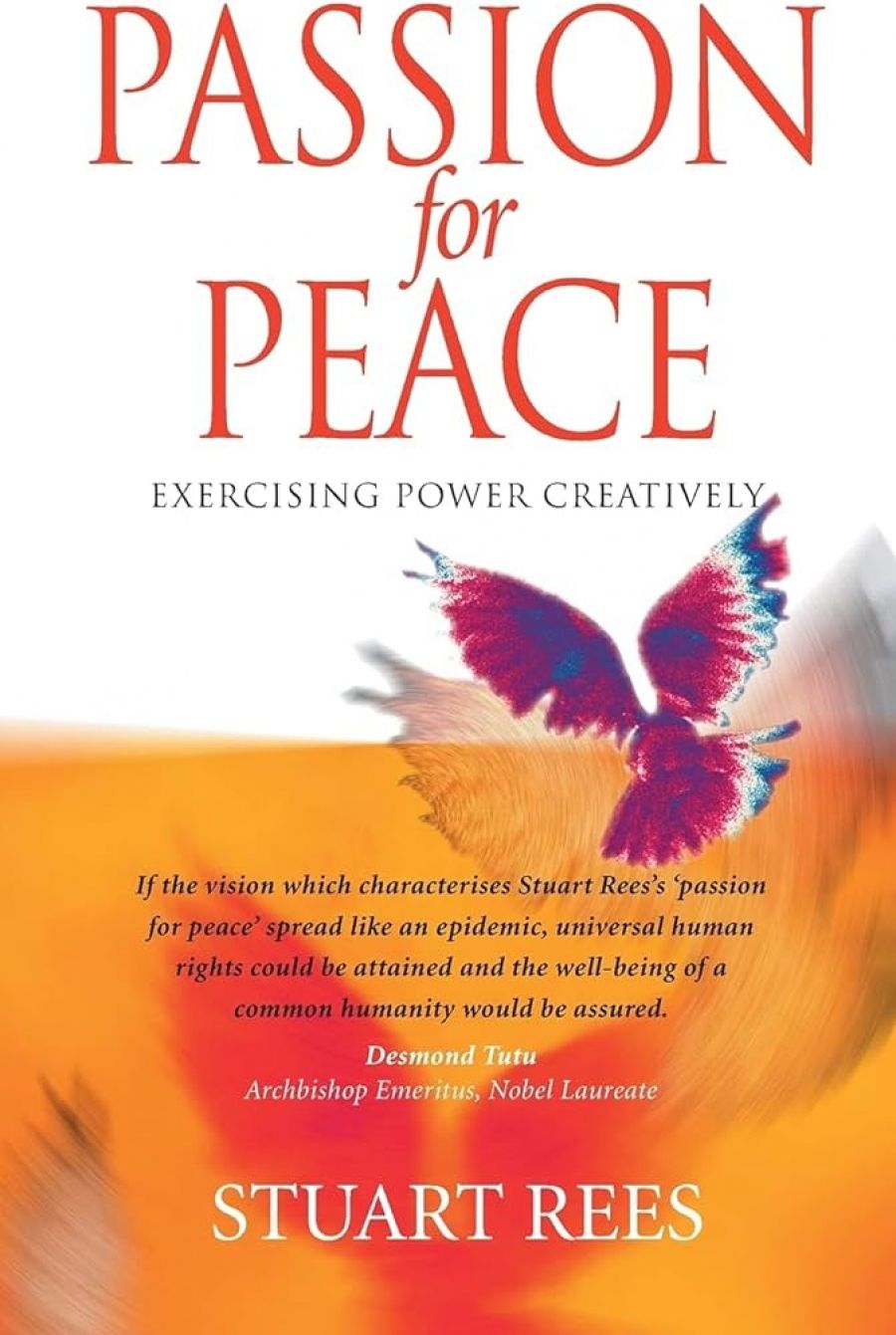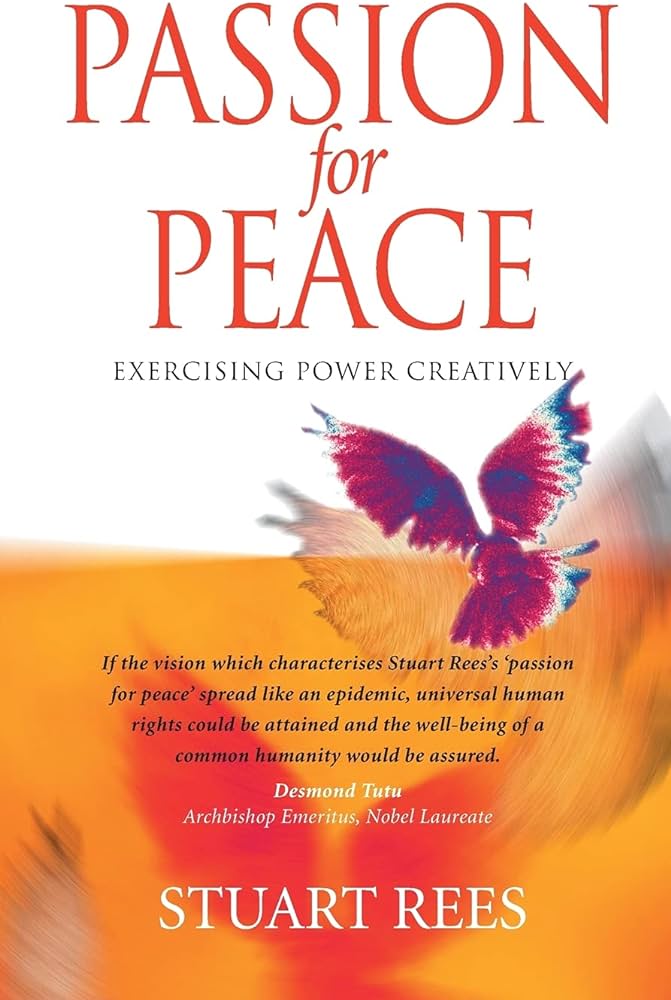
- Free Article: No
- Contents Category: Philosophy
- Custom Article Title: Anthology of Peace
- Review Article: Yes
- Article Title: Anthology of Peace
- Online Only: No
- Custom Highlight Text:
It all seems so obvious. So why is the practice of non-violence, peaceful negotiation and conflict resolution so hard? ‘To realise a vision of peace with justice requires inspiration and commitment,’ writes Stuart Rees, in an affirmation that shapes his inspirational new book, Passion for Peace. Rees explores the complexities and possibilities of peacemaking from varied perspectives: political, sociological, legal, biographical and, not least, literary. Rees’s text is studded with quotations from poets: the great Romantics, Wordsworth and Shelley; Denise Levertov; war poet Wilfred Owen; Australian poets Oodgeroo Noonuccal, Judith Wright and Rosemary Dobson – more than fifty all told.
- Book 1 Title: Passion for Peace
- Book 1 Subtitle: Exercising power creatively
- Book 1 Biblio: UNSW Press, $39.95pb, 304pp
- Book 1 Cover Small (400 x 600):

- Book 1 Cover (800 x 1200):

Passion for Peace appears to be not so much a book with a linear argument as a collation of the wisdom and experience that Rees has acquired from his early career in social work to his current position as the Director of the Centre for Peace and Conflict Studies at the University of Sydney. Although his ideas and reflections are organised into chapters, with case studies and diagrams, his writing tends to be exhortatory and inspirational, and, in the earlier chapters at least, sometimes a little hard to follow. A reader is likely to find herself in agreement with many of the ideals discussed, but the more meaty chapters follow later. Readers may vary as to which they find more helpful, but, in my case, the chapter entitled ‘Practising Non-Violence’ was of most interest, with its extensive list of examples of non-violent protest, from petitions, marches and letter-writing to burning one’s own property (draft cards, pass books) and boycotting goods produced by companies that collude with oppressive régimes. The chapter continues with reflections on the biographies of key international figures in the practice of non-violent protest: Mahatma Gandhi, Martin Luther King and Aung San Suu Kyi.
Although Rees gives prominence to Mother Courage as a confronting indictment of war, his commitment to interdisciplinary and literary approaches to his subject is expressed mainly through poetry. Some of his choices are familiar and hard-hitting: Wilfred Owen’s ‘Anthem for Doomed Youth’, Kenneth Slessor’s ‘Beach Burial’ and A.D. Hope’s terse line: ‘We took their orders and are dead.’ Others writing in a tradition of poetry as a vehicle for protest and liberation include Pablo Neruda and Xanana Gusmao. Rees’s choices reflect a Wordsworthian aesthetic, where poetry may be revolutionary but is predominantly renewing, nourishing and inspiring, with ecological concerns also embraced. The poems in Passion for Peace offer a rich resource for reflection on Rees’s themes. Only once did I entertain doubts about his interpretation, in a verse from A.E. Housman, where a note of irony and bitterness appeared to have been missed.
It seems a pity that Rees has limited most of his literary examples to poetry, when fiction, drama and life-writing communicate stories of oppression so effectively to a wide readership that their contribution to changes in social attitudes is widely acknowledged. Sally Morgan’s My Place is an obvious example.
Much of the interest in this book seems to me to reside less in the outlining of general principles and guidelines than in the examples and case histories with which Rees illustrates his main topics, and which may be summarised as transforming ourselves, seeking inspiration, negotiating, practising non-violence, advocating and understanding human rights, recovering humanitarianism and redefining sovereignty. His account of the ‘West Papua Project’, a series of negotiations conducted at the Centre for Peace and Conflict Studies, is an impressive example of how groups in conflict may be supported in dialogue: in this case, participants included members of West Papua’s independence movement and Indonesian government officials. On a lesser scale, much can be learnt from Rees’s autobiographical account of the process of conflict resolution ensuing from the destruction of a little-used Ukraine Catholic Church in a small Canadian town.
To introduce a critical note in discussing a book that exemplifies such strong and informed idealism, wide learning and hard-earned experience runs the risk of appearing small-minded. Nevertheless, I had some problems with Passion for Peace. The first was an uncertainty about exactly what audience was intended. The book is not written for experts in international relations, political philosophy or conflict resolution, but rather for a general readership. Peace activists of all ages are likely to be nodding in agreement throughout their reading of Rees’s book. How could there be disagreement on such inspiring and practical statements as ‘in the search for ways to contribute to justice and to peace, it is important for any citizen to feel they can make a difference’ or ‘questioning the status quo gives a cue for dialogue with those who might become allies’? A reading of Passion for Peace by those already committed to Rees’s principles will provide reinforcement and even refreshment, although I wonder to what extent the book has the capacity to transform or even reach a readership of doubters. The chapter on human rights makes a strong case for activists and professionals to be informed, but as an educative text for the layperson I would turn to a more specialised book such as Peter Bailey’s Bringing Human Rights to Life (1993). For approaches to addressing bullying in the school or work-place, I might consult sociologist Eliza Ahmed’s work, and for the relationship between justice and compassion, the writings of contemporary Christian and Jewish theologians.
Passion for Peace will be viewed by people committed to peace as a valuable resource, packed with experience, inspiring biography and case histories, and, above all, as a virtual anthology of poetry for peace.


Comments powered by CComment